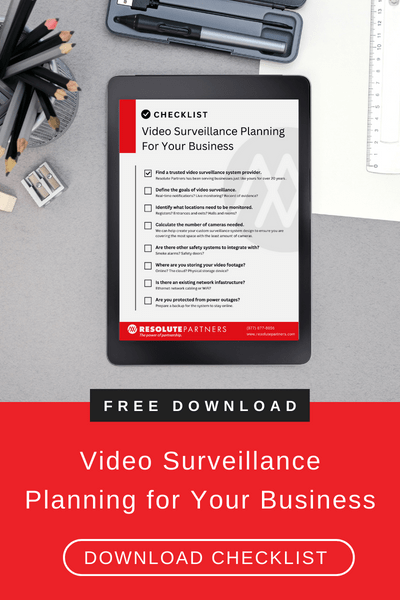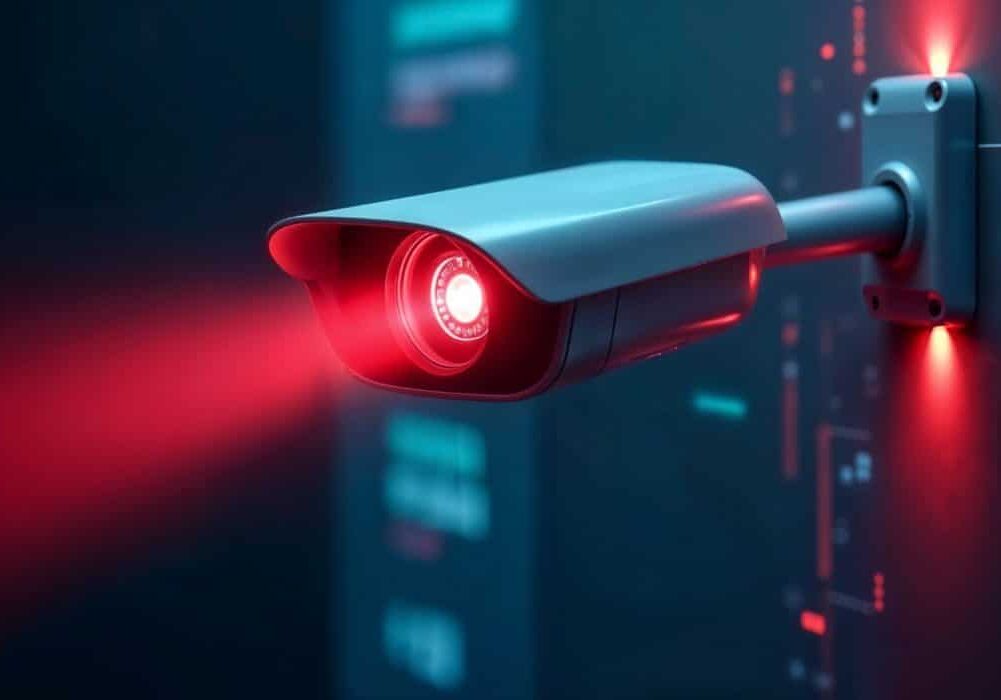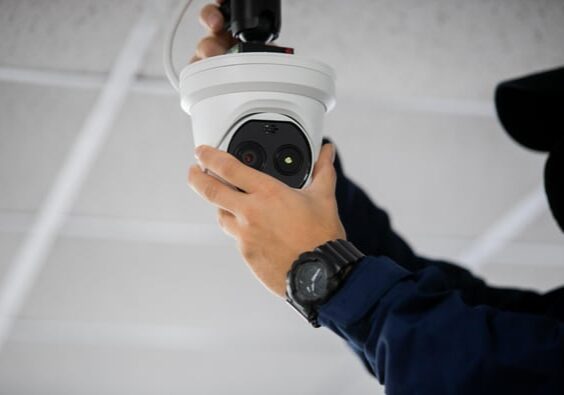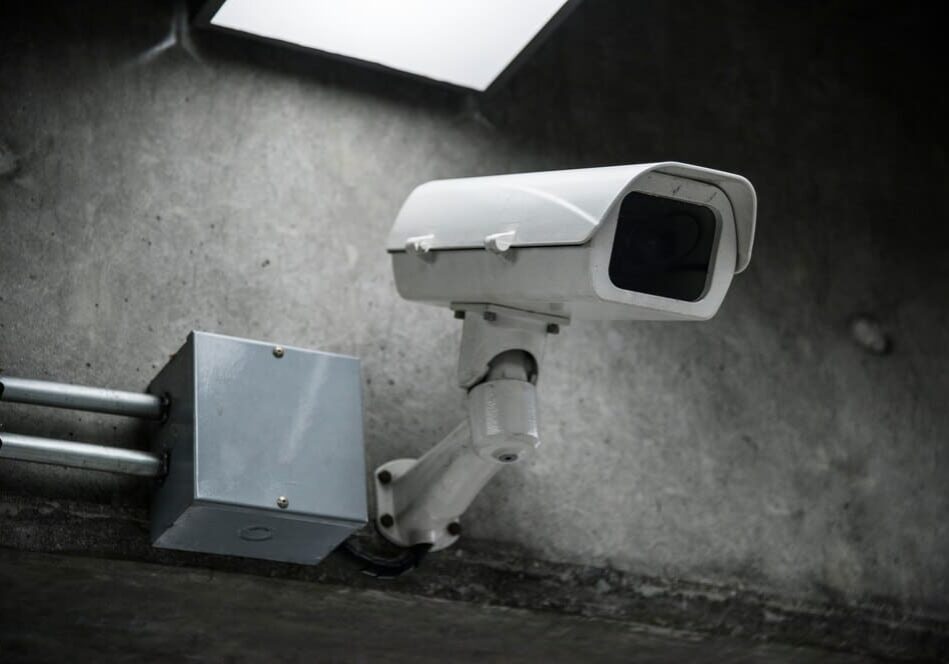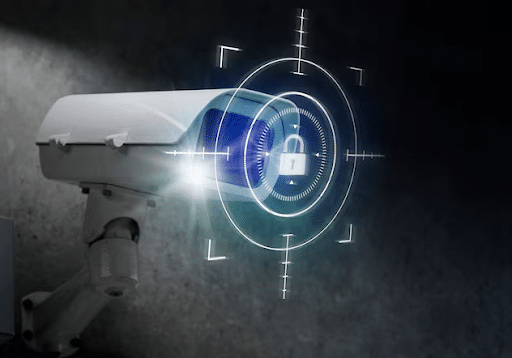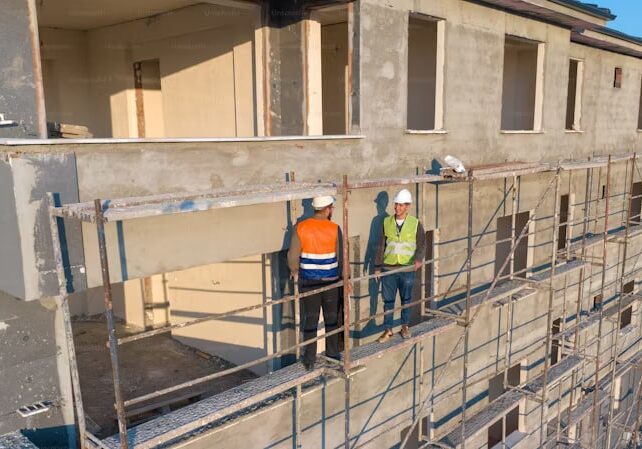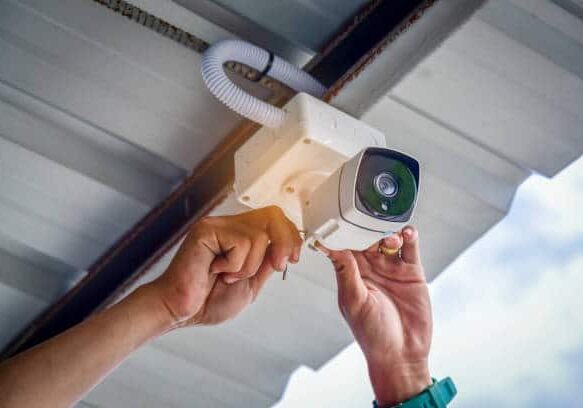Introduction: The Importance of CCTV Cameras in Modern Security
Closed-circuit television (CCTV) systems play a pivotal role in modern security, delivering crucial surveillance where it’s most required.
These systems provide valuable advantages across multiple environments—preventing theft and vandalism or improving day-to-day operational oversight.
This article breaks down the various types of CCTV cameras, highlighting their key features, functions, and ideal applications. This guide is designed to help you choose the right solution based on your specific security needs.
Types of CCTV Cameras
1. Dome CCTV Cameras
Named for their dome-shaped housing, these cameras are designed to obscure the direction of the lens, enhancing discreet surveillance.
Ideal Uses:
- Public Areas: Suitable for environments like shopping malls, restaurants, and lobbies where security and aesthetics are essential.
- Vandal-Prone Locations: Their robust design makes them resistant to tampering, ideal for high-risk areas.
Key Benefits:
- Durability: Vandal-resistant features protect against tampering and damage.
- Discreet Design: Their unobtrusive appearance blends seamlessly with various architectural styles.
- Wide Coverage: Equipped with wide-angle lenses, they provide extensive coverage, potentially reducing the number of cameras needed.
Cons:
- Limited Long-Range Focus: Not ideal for long-distance monitoring.
- Subtle Presence: Their discreet design may not be a strong visual deterrent.
- Maintenance: The dome casing may require regular cleaning to ensure clear visuals.
2. Bullet CCTV Cameras
Recognizable by their long, cylindrical shape, bullet cameras are typically used for outdoor surveillance and are known for their deterrent effect.
Ideal Uses:
- Specific Area Monitoring: Effective for overseeing entrances, parking lots, and other targeted zones.
- Outdoor Environments: Designed to withstand various weather conditions, making them suitable for external use.
Key Benefits:
- Long-Range Focus: Capable of capturing high-quality footage over extended distances.
- Visible Deterrent: Their conspicuous design can discourage potential intruders.
- Night Vision: Often equipped with infrared capabilities for clear images in low-light conditions.
Cons:
- Narrow Field of View: Limited wide-angle coverage may require additional comprehensive monitoring cameras.
- Fixed Positioning: Lacks flexibility in adjusting viewing angles without manual intervention.
- Vulnerability: Exposed placement can make them susceptible to vandalism.
3. PTZ (Pan-Tilt-Zoom) CCTV Cameras
These cameras offer dynamic control, allowing operators to pan horizontally, tilt vertically, and zoom in on specific areas for detailed observation.
Ideal Uses:
- Expansive Areas: Suitable for monitoring large spaces like parks, parking lots, and marketplaces.
- Business Settings: Beneficial for environments requiring flexible viewing angles and real-time focus adjustments.
- High-Traffic Zones: Essential in areas where rapid camera adjustments are necessary due to frequent activity.
Key Benefits:
- Comprehensive Coverage: Remote adjustment capabilities allow for extensive monitoring without physical repositioning.
- Detailed Observation: Optical zoom features enable close-up views without losing image quality.
- Versatility: Ideal for scenarios requiring both wide-area surveillance and focused monitoring.
Cons:
- Maintenance Requirements: Moving parts may necessitate regular upkeep to ensure functionality.
- Operational Oversight: Often requires active management to adjust viewing angles effectively.
- Cost: Advanced features can lead to higher purchase and installation expenses.
4. C-Mount CCTV Cameras
Featuring detachable lenses, C-mount cameras provide flexibility to adapt to various surveillance needs by switching lenses.
Ideal Uses:
- Large Areas: Effective for covering expansive spaces such as warehouses and parking lots.
- Adaptable Surveillance: Suitable for environments where monitoring requirements may change, allowing for lens adjustments accordingly.
Key Benefits:
- Customizable Field of View: Interchangeable lenses enable tailored surveillance solutions.
- High-Definition Imaging: Capable of delivering clear and detailed video quality.
- Durability: Robust design suitable for both indoor and outdoor applications.
Cons:
- Size and Visibility: Bulkier design makes them more noticeable, potentially affecting discretion.
- Technical Installation: Adjusting and installing lenses may require specialized knowledge.
- Cost Considerations: Additional lenses and specialized components can increase overall expenses.
5. Infrared (IR) & Night Vision CCTV Cameras
Equipped with IR LEDs, these cameras can capture clear footage in complete darkness, making them essential for 24/7 surveillance.
Ideal Uses:
- Continuous Monitoring: Essential for areas requiring round-the-clock surveillance, such as building perimeters and parking lots.
- Low-Light Environments: Suitable for indoor locations like warehouses where lighting is minimal.
Key Benefits:
- Uninterrupted Surveillance: Provides clear images regardless of lighting conditions.
- Motion Detection: Often includes features that alert operators to movement during nighttime.
- Enhanced Detail: Some models offer color night vision, improving the ability to identify subjects.
Cons:
- Higher Cost: Generally more expensive than standard day/night cameras.
- Limited Color Accuracy: Night footage may lack color detail due to infrared imaging.
- Visible IR LEDs: LEDs may expose the camera’s location or attract insects.
6. Wireless CCTV Cameras
Wireless cameras transmit footage via Wi-Fi, eliminating the need for cables and making installation easier. Ideal for flexible, non-permanent setups.
Ideal Uses:
- Temporary Monitoring: Perfect for areas with impractical wiring or temporary setups.
- Renters & Small Businesses: Ideal for home security or small entities needing mobility and easy installation.
Key Benefits:
- Easy Setup & Relocation: No extensive wiring is needed, making them simple to move.
- Less Invasive: Avoids drilling or wall damage.
- Remote Access: View footage live or recorded via internet-connected devices.
Cons:
- Signal Interference: Wi-Fi signals may be disrupted by obstacles or electronic devices.
- Cybersecurity Risks: Vulnerable to hacking if not adequately secured.
- Regular Maintenance: Needs constant upkeep to ensure stable performance.
7. IP (Internet Protocol) CCTV Cameras
IP cameras transmit digital video via a network connection, offering superior resolution and scalability over analog systems.
Ideal Uses:
- Retail & Corporate Spaces: High-res footage aids in theft prevention and monitoring.
- Public Areas & Remote Monitoring: Effective in busy areas and remotely overseeing assets.
Key Benefits:
- High-Resolution Images: Provides clearer, detailed visuals.
- Scalable System: Easy to expand as surveillance needs grow.
- Advanced Features: Supports motion detection, night vision, and remote viewing.
Cons:
- Cybersecurity Demands: Strong network security is needed to prevent unauthorized access.
- High Bandwidth Usage: Can strain network resources.
- Installation Costs: Setup and infrastructure can be costly for large-scale use.
8. HD CCTV Cameras
High-definition cameras capture crisp, detailed footage, making them essential for identifying individuals and objects.
Ideal Uses:
- High-Security Zones: Critical for entry points and areas needing clear identification.
- Retail & Commercial Spaces: Helps monitor activity and prevent theft.
- Identification-Critical Areas: Ideal where accurate visual identification is required.
Key Benefits:
- Clear Image Quality: Superior resolution improves identification.
- Better Low-Light Performance: Captures clearer footage in dim conditions.
- Enhanced Digital Zoom: Maintains detail when zooming in.
Cons:
- Increased Storage Needs: Larger files require more storage space.
- Higher Bandwidth Requirements: This may affect network performance.
- Cost: Generally pricier than standard-definition systems.
9. Thermal CCTV Cameras
Thermal cameras detect heat signatures rather than visible light, providing clear images even in total darkness, smoke, or adverse weather.
Ideal Uses:
- Perimeter Security: Excellent for large outdoor areas and property lines.
- Industrial Facilities: Detects overheating equipment or fire risks.
- Search & Rescue: Useful in low-visibility conditions like forests or disaster zones.
Key Benefits:
- Reliable in Darkness & Bad Weather: Provides clear visuals regardless of visibility.
- Heat Detection: Identifies threats based on temperature differences.
- Reduces False Alarms: Differentiates between living beings and non-heat sources.
Cons:
- Cost: Typically more expensive than standard cameras.
- Limited Visual Detail: Difficulty in recognizing faces or fine details.
- Often Requires Integration: Best used alongside other camera types for comprehensive coverage.
10. Hidden/Covert CCTV Cameras
Miniature or covert cameras are designed for discreet surveillance, often concealed in everyday objects for unnoticed monitoring.
Ideal Uses:
- Unobtrusive Monitoring: Perfect for observing employees or sensitive areas without being detected.
- Indoor Settings: Small sizes make them ideal, whereas larger cameras are impractical.
Key Benefits:
- Highly Discreet: Allows covert observation.
- Flexible Placement: Easy to hide due to compact design.
- Wired or Wireless Options: Offers installation flexibility.
Cons:
- Lower Video Quality: Smaller size limits resolution and range.
- Narrower Field of View: Less coverage compared to larger cameras.
- Ethical & Legal Concerns: Must comply with privacy laws and consent regulations.
11. Multi-Head CCTV Cameras
Multi-head CCTV cameras are equipped with multiple lenses in one unit, offering broad coverage and eliminating the need for multiple single-lens cameras. They are designed to minimize blind spots and provide seamless surveillance over wide areas.
Common Types:
- Dual-Head Cameras: Ideal for monitoring both directions in hallways or corridors.
- Three-Head Cameras: Provide 270-degree coverage, perfect for corners and intersections.
- Four-Head Cameras: Deliver complete 360-degree panoramic views for maximum visibility.
Best Applications:
- Warehouses & Industrial Sites: Cover large spaces efficiently.
- Hallways & Corridors: Ensure two-way monitoring without gaps.
- Retail Stores & Parking Areas: Achieve full coverage with fewer devices.
- Open Spaces & Intersections: Maintain clear surveillance in multiple directions.
Key Advantages:
- Expands area coverage with one device.
- Lower installation, wiring, and maintenance costs.
- Simplifies system management with fewer cameras.
Drawbacks:
- Consumes more bandwidth and storage.
- Setup and configuration may be more complex.
- Each lens might have a lower resolution compared to dedicated single-lens units.
How to Choose the Right CCTV Camera for Your Needs
Selecting the right CCTV system depends on the type, connectivity, and location. Here are key factors to consider:
- Property Size & Setup: Larger sites benefit from wired systems, linking multiple cameras to a central hub for constant monitoring. Smaller spaces like offices can opt for wireless cameras, which are cheaper, easier to install, and avoid structural changes.
- Storage & Monitoring Needs: If you need to store large footage or meet industry regulations, IP cameras with internal processing and video management systems work best. For remote access, choose Wi-Fi or network-based cameras.
- Maintenance: Cameras with moving parts (e.g., PTZ or turret models) require more upkeep. If maintenance is a concern, select simpler, fixed models.
- Scalability: Choose systems that integrate with your current setup and support future expansion, ensuring long-term value.
Conclusion: Secure Your Property with the Best CCTV Cameras
Tailored video security solutions are vital in any strong business security system. Business owners and security teams must invest time and resources to choose systems that align with their needs, budget, and operational timelines. Selecting the right types of CCTV cameras ensures better asset protection without unnecessary costs or delays. By applying the insights from this guide, businesses can design a security setup optimized for their unique requirements.
Ready to safeguard your business with a customized solution? Contact Resolute Partners today and let our experts craft a security system tailored to your needs.
FAQs
- What is the best type of CCTV camera for security?
The best CCTV camera depends on your specific needs. HD cameras offer clear visuals for general surveillance, while infrared or thermal cameras are ideal for low-light conditions. PTZ (Pan-Tilt-Zoom) cameras provide broad coverage and zoom capabilities for businesses needing flexibility.
- Are wired or wireless CCTV cameras better?
Both have advantages. Wired cameras offer stable connections and are ideal for large properties. Wireless cameras are easier to install and provide more flexibility, but may depend on strong Wi-Fi signals.
- Do night vision CCTV cameras work in complete darkness?
Yes, night vision cameras—especially infrared cameras—can capture clear footage even in total darkness by detecting infrared radiation emitted by objects.
- How much storage do I need for my CCTV system?
Storage needs depend on the number of cameras, resolution, and how long you wish to keep footage. Typically, businesses require between 1TB to 4TB for 30 days of continuous recording.
- Can I monitor my CCTV cameras remotely?
Most modern CCTV systems offer remote access via mobile apps or web platforms, allowing you to view live feeds and receive alerts from anywhere.

Michael S. Blanco is the Chief Executive Officer and Co-Founder of Resolute Partners, LLC, where he leads strategic initiatives across various divisions. After owning family entertainment centers in New England, he co-founded Resolute Partners in 1996, launching the first Internet cafés for the U.S. Navy and partnering with AT&T for global deployment. A pioneer in wireless communications, Michael has expanded the company’s focus to include Energy Management/IoT, Cybersecurity, and Managed Video Security. He holds a degree from the Rochester Institute of Technology.
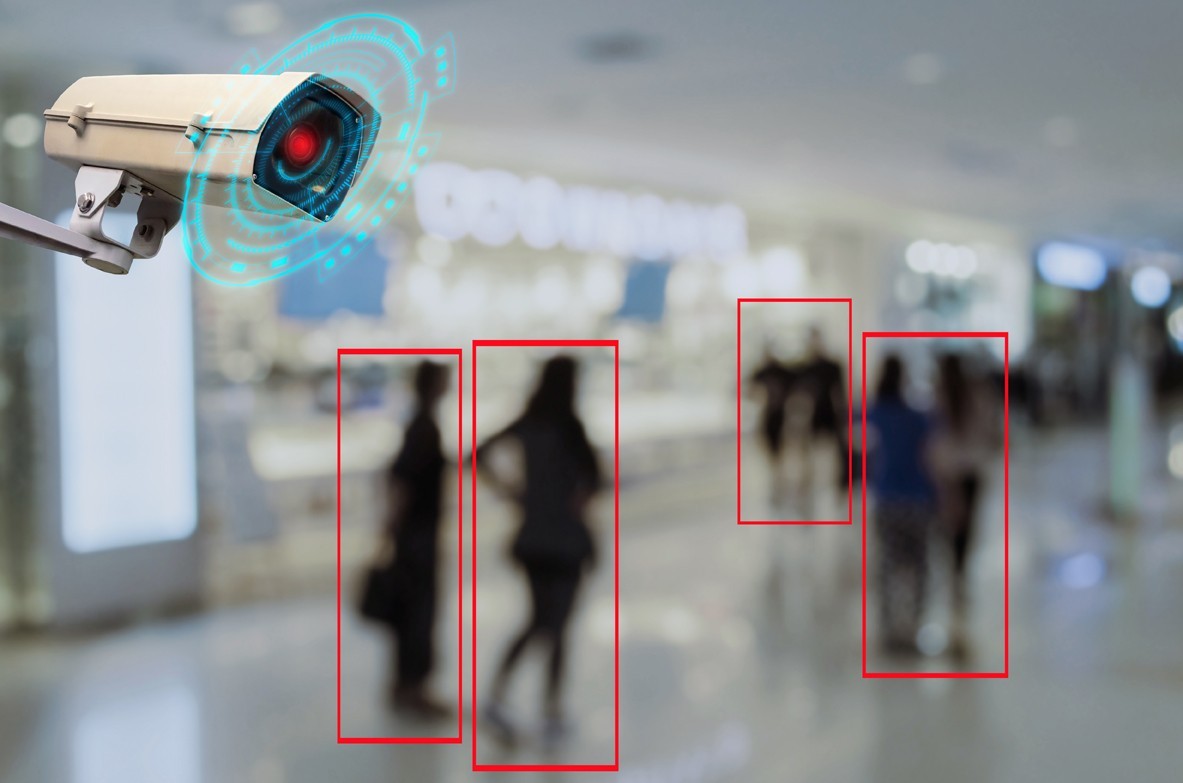
Stay up to date.
Subscribe for latest news, protection tips, special offers, and more!




